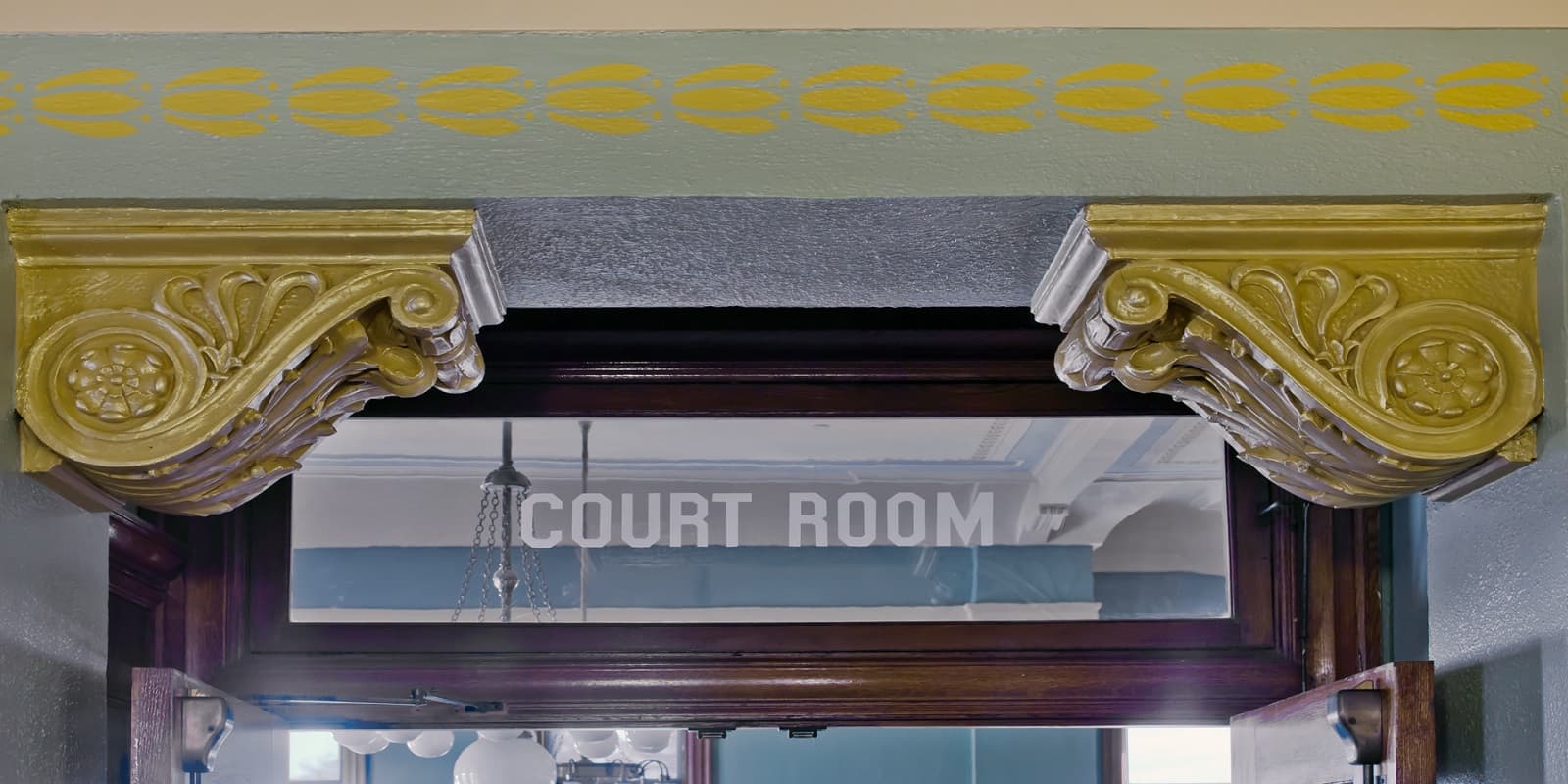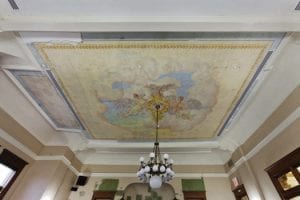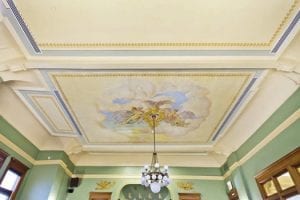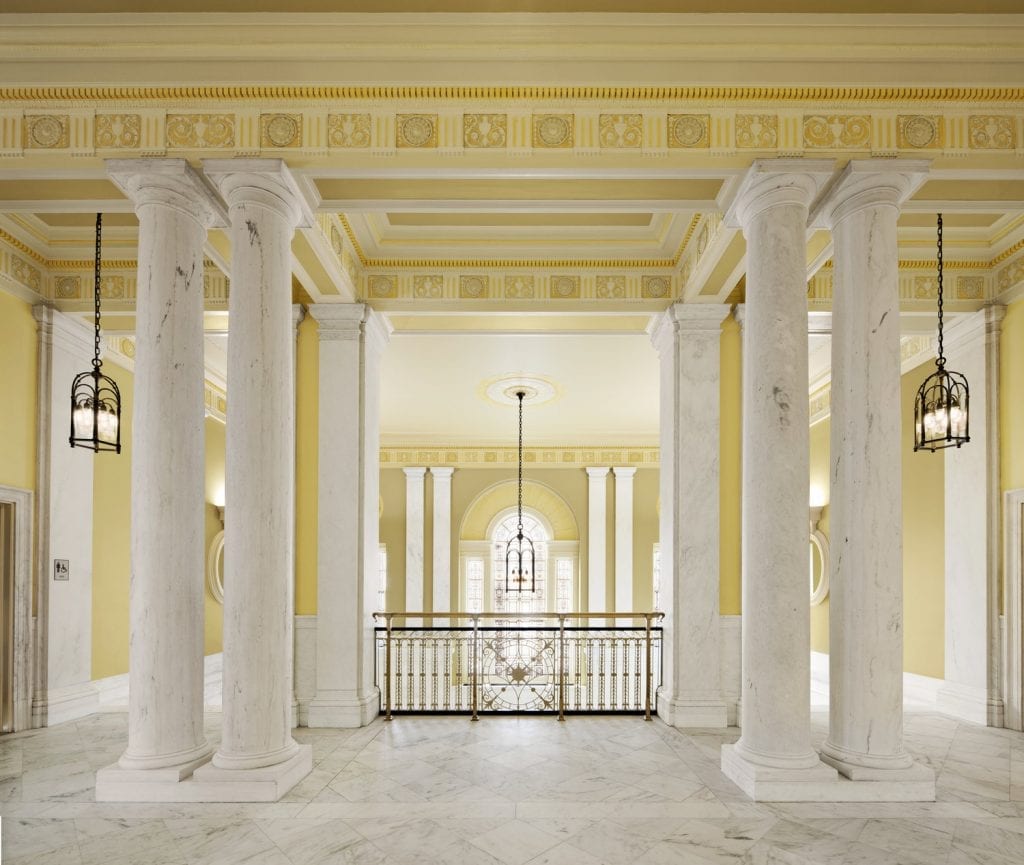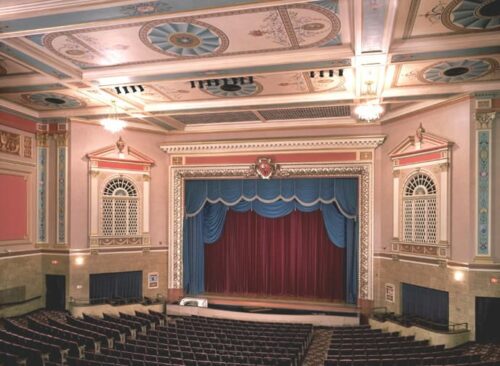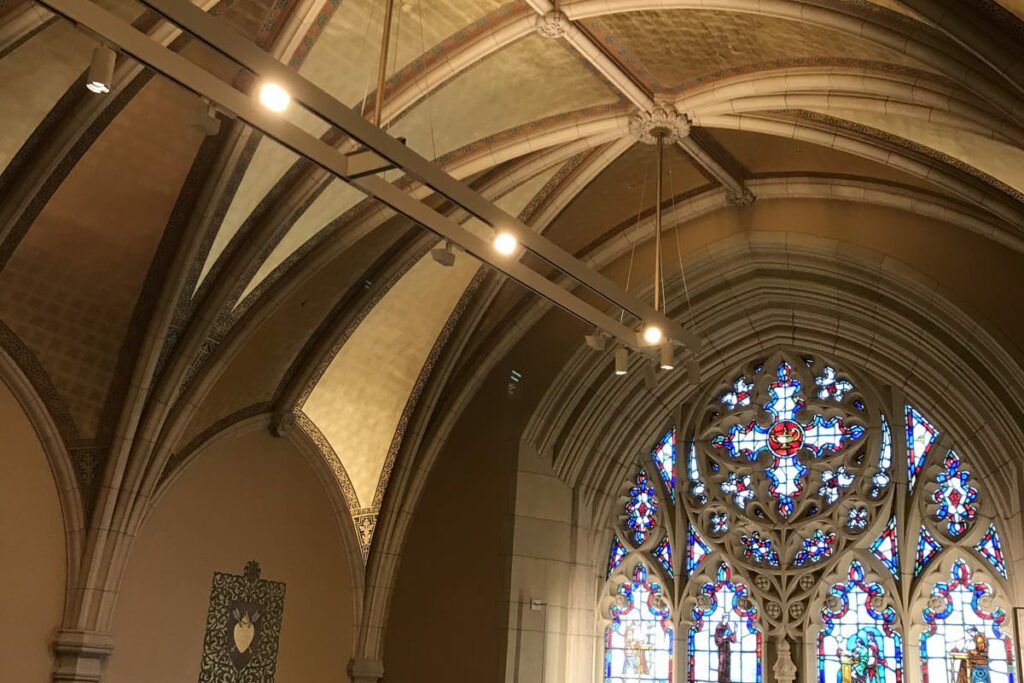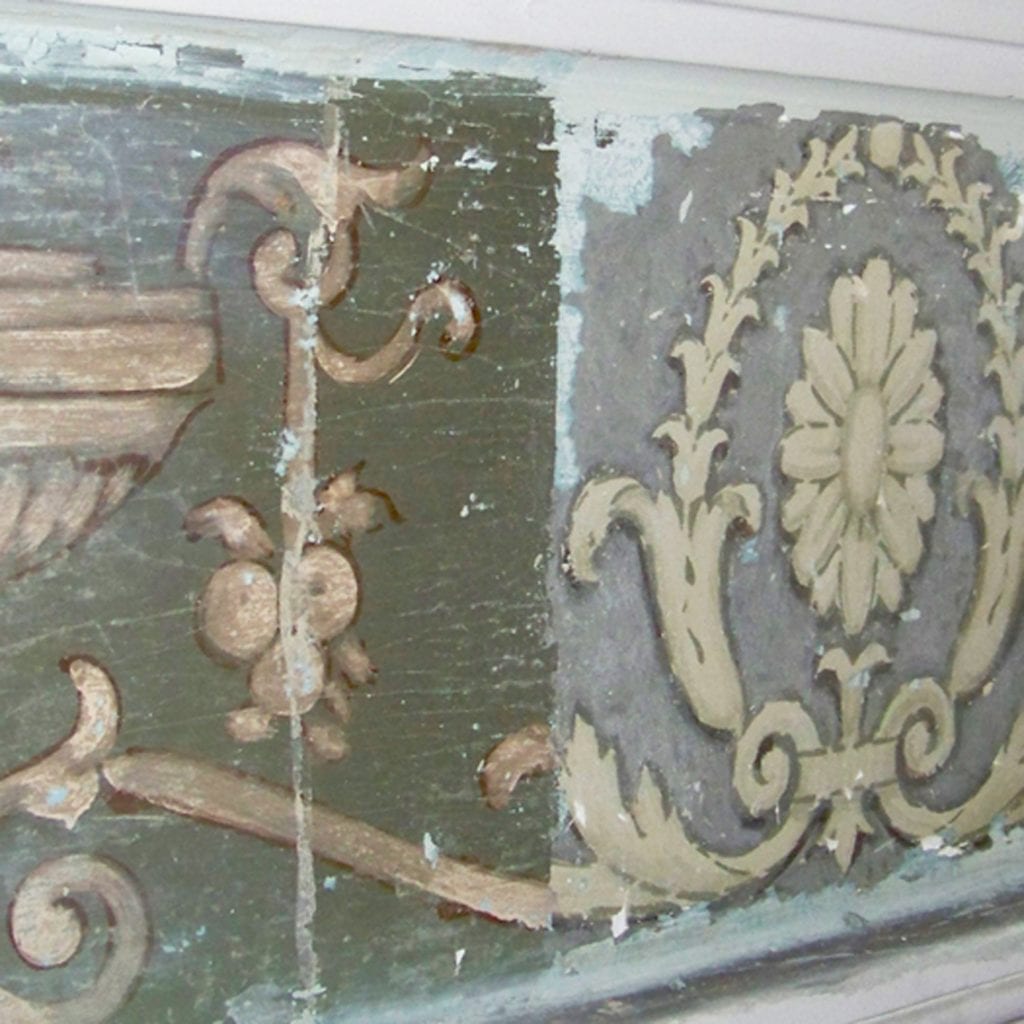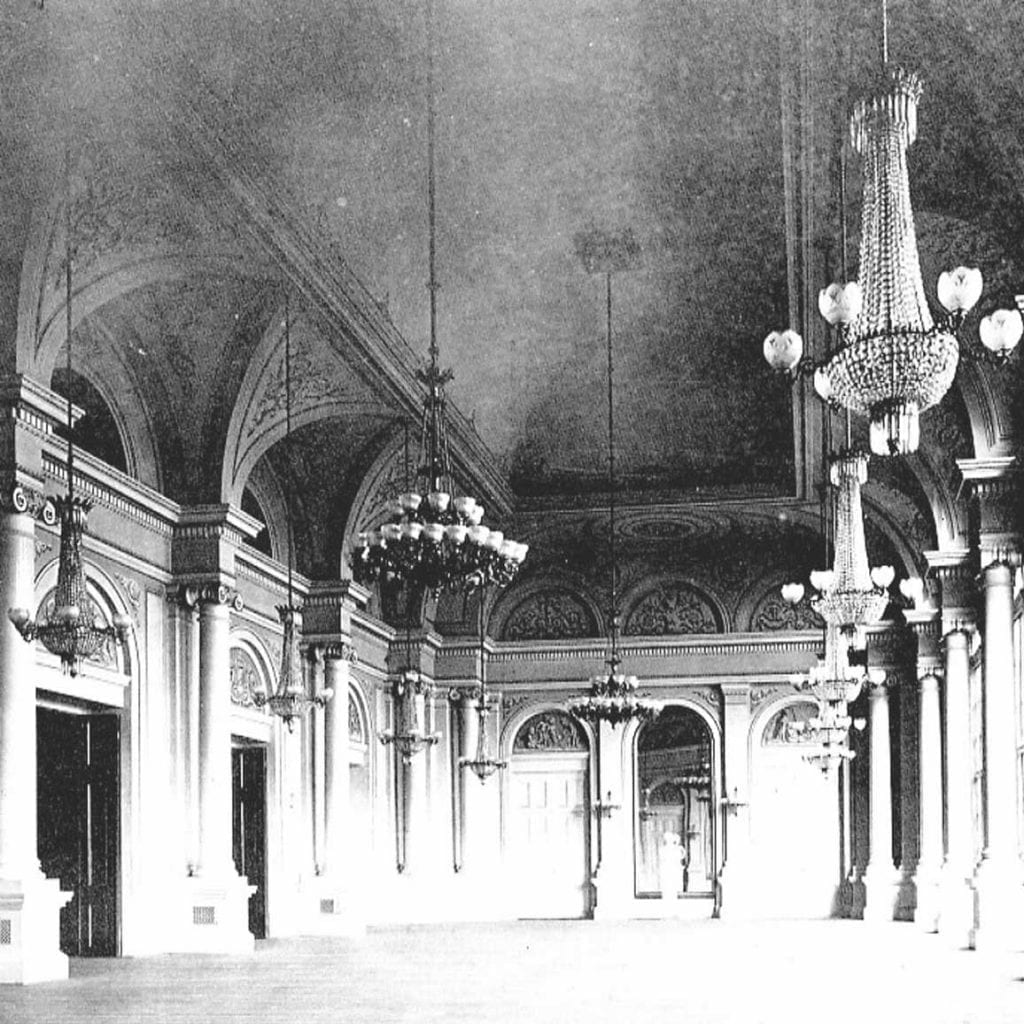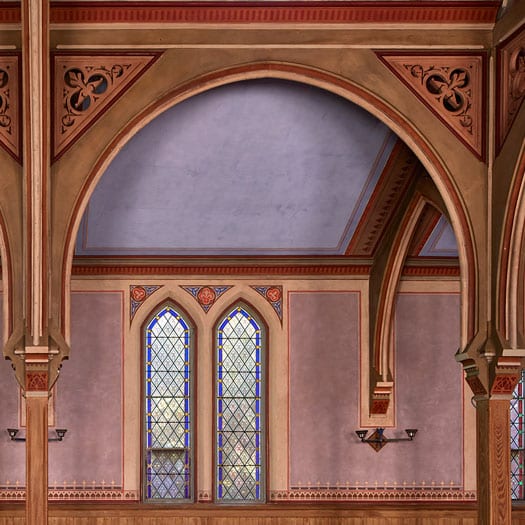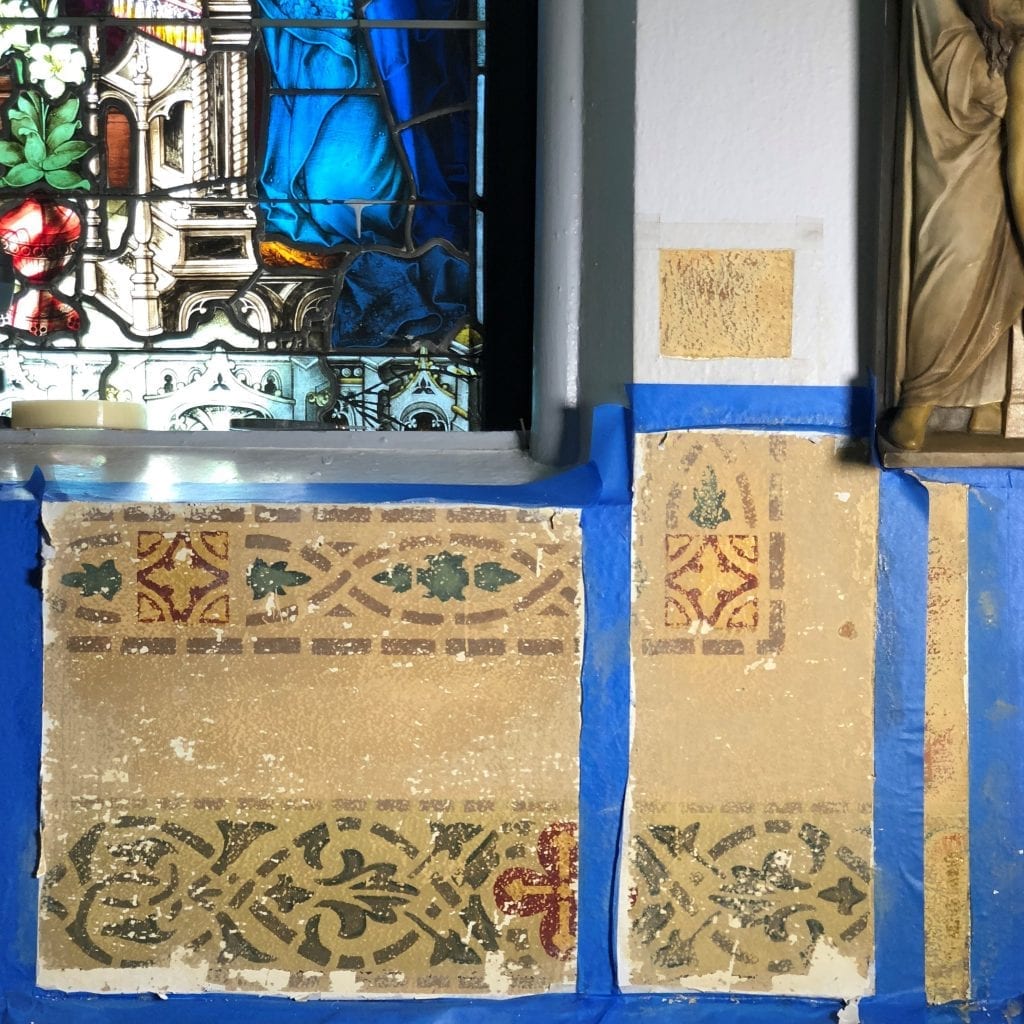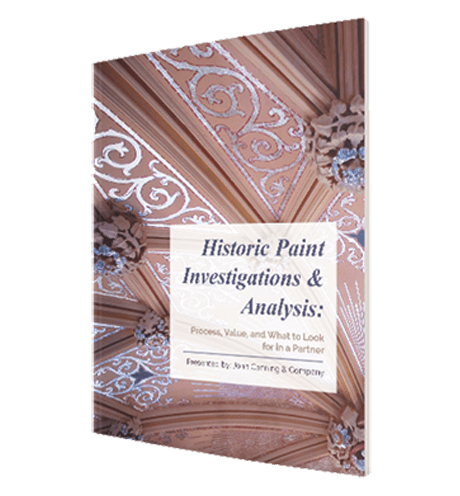When embarking on a preservation project, we must ask the question: What do we have?
An essential part in documentation and project planning is a historic paint analysis, or finishes investigation. The four-pronged process helps define the scope of work for a project, prepare specifications for conservation or restoration, and develop appropriate budgets when applying for grants, fundraising, or preparing capital campaigns.
Below, we review what a paint analysis is, what the process entails, and how you can prepare for the process if you choose to have an analysis conducted for your structure.
What is a historic paint analysis?
A historic paint analysis is a process that provides a thorough investigation of the original finishes in building. An analysis can help identify a multitude of things including:
- The original color scheme and chromochronology
- The components of the types of paint used i.e. distemper, oil based, acrylic, etc.
- Methods for conservation of historic paint that remains for conservation cleaning
- Feasibility of paint removal or methods for replication and restoration.
- Develop an appropriate scope of work and budgets or pricing.
Some of the reasons that you might conduct a historic paint analysis may include (but aren’t limited to):
- Believing that your structure may house unseen decorative paintwork
- Discovering primary sources (photographs, news articles, etc.) that allude to historical artwork
- Cracked, peeling, or otherwise failing paint
- And more
The Process
There are four key components to a historic paint analysis and together they provide a window into the decorative history in a space or building:
- Archival Research, which includes inspection of primary sources such as photographs, newspaper or magazine articles, original specifications, etc. This information will help guide the collection of samples and the final interpretation of the report.
- On-site Exposures & Sampling, which entails the physical gathering and cataloging of samples for laboratory analysis.
- Laboratory Analysis if the collected samples by microscopy and other techniques in order to reveal the paint stratigraphy and chromatography of the samples and determine the campaign of significance.
- Report and Interpretation, during which the findings of the analysis are organized and, more importantly, interpreted in order to guide the architect/owner forward down the path of restoration or conservation.
Before restoration the original scheme had been painted over and artwork damaged. Grant County Courthouse after restoration.
How to prepare for a historic paint analysis
No two projects are ever exactly the same: The specifics are dependent upon the complexity of the original finishes and the architecture of the building. With that in mind, there are a few steps that you can take to better prepare yourself for the process of conducting a historic paint analysis.
1. Know your objective, but also know that your objective might change.
Finishes investigations are often performed with a particular objective in mind: For example, to identify the significant period in a building. However, with the information provided during a paint analysis, multiple campaigns may be revealed, or a new design altogether developed. It’s for this reason why, when hiring a conservator to conduct a historic paint analysis, it’s important to keep an open mind that your initial plans and assumptions may change.
A paint analysis can also help provide insight in developing a clear objective for a preservation project. For example, for the restoration of Grant County Courthouse, bid documents identified one decorative campaign to be reinstated. John Canning & Co. was the successful low bidder, and during the initial phase of the project additional investigations and paint analysis were performed where we uncovered an earlier campaign. This earlier campaign proved to be the original 1906 campaign and period of significance that was ultimately restored.
2. Understand the time commitment.
A thorough paint investigation can take up to two to three weeks, with three to five days of on-site investigations. This is ultimately largely dependent on the amount of archival information available, as well as access and the feasibility of paint removal for exposures during the onsite investigations.
The methods for exposures and the solvents used may vary from location to location, and testing various methods of course takes time. During the interpretation process, a draft report may be provided before a final report with drawings, renderings, etc. are completed.
With this in mind, it is important to understand how the on-site investigation may impact the day-to-day operations within the building. If scaffolding or other access needs to be installed for the investigations, we will provide means of egress and pedestrian flow plans to prevent any disruption.
3. Determine what level of access will be necessary for the investigation to take place.
On-site investigations and time on site is, ultimately, dependent on access. While many areas may be easily accessed from the ground level or by a ladder, higher areas such as ceilings, ceiling entablatures, or beams that may contain design elements may require scaffolding to be installed in order for an thorough investigation to be completed. This is something to consider when preparing for the paint analysis and preparations for field investigations.
Answering the Question: What Do We Have?
Whether the project is a true restoration or it is an interpretation that incorporates original designs and color scheme, a historic paint analysis can provide the information needed to bring about an accurate final result. It’s an important aspect in design development and cost preparation for any project, which allows us to properly answer the question: What do we have?
A specific scope of work and project objective can be defined preventing any unforeseen design changes or added costs. With all aspects of a paint analysis—archival research, on site investigations, laboratory analysis, and interpretation—we are armed with the right information for a successful project.
As Benjamin Franklin once said, “an investment in knowledge provides the best interest.” After a thorough paint analysis and investigation, we must ask the next question: What do we do with it?

